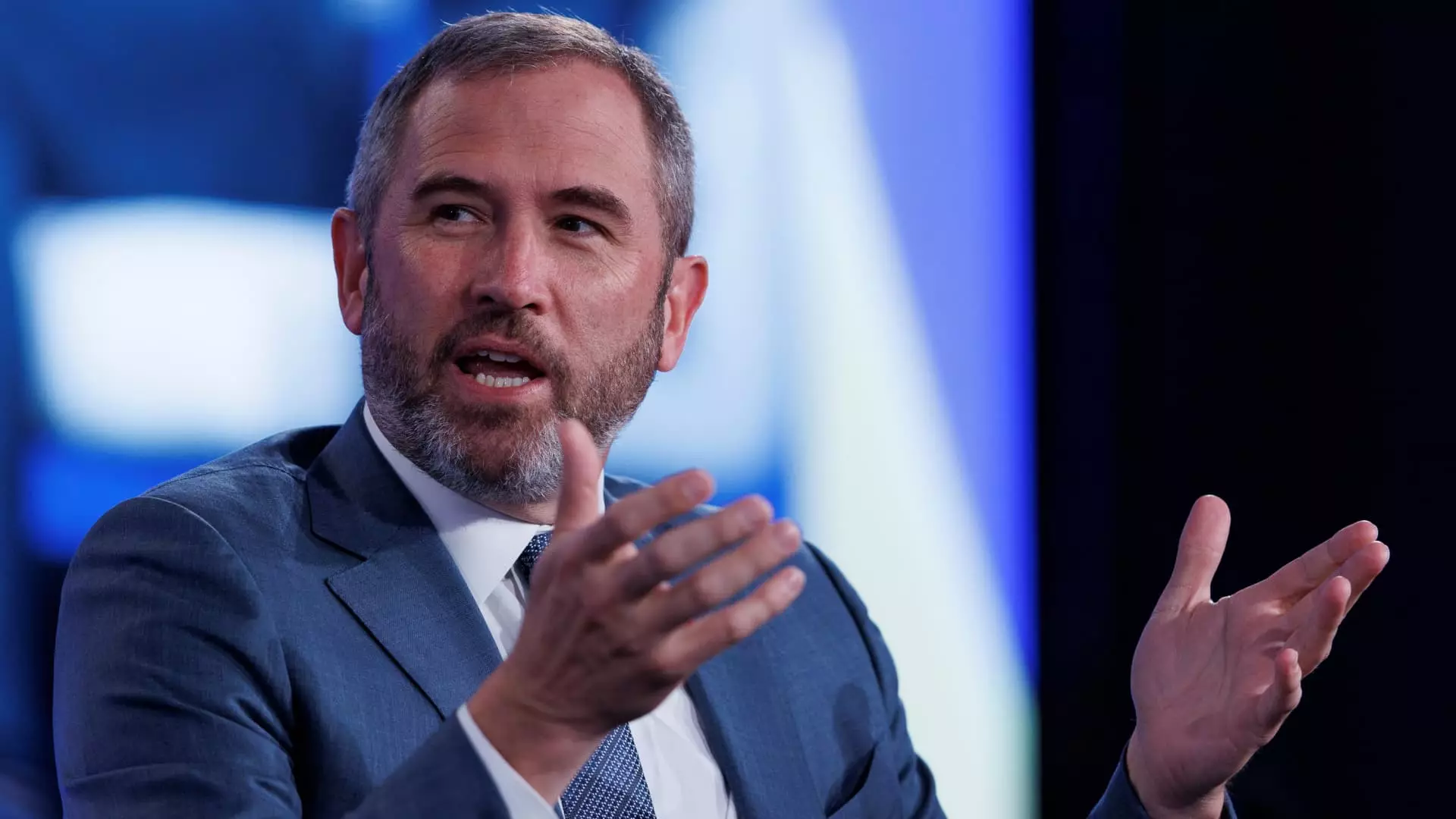As the United States gears up for an election that could redefine its regulatory approach to cryptocurrencies, Ripple Labs’ CEO Brad Garlinghouse emerges as a prominent voice expressing cautious optimism about the potential for a more favorable environment for digital assets. On the heels of a transformative period for the crypto industry, Garlinghouse’s remarks during a CNBC interview at DC Fintech Week underscore a growing sentiment among crypto leaders that change is, if not imminent, certainly possible.
Garlinghouse has long maintained a skeptical view of the regulatory climate in the U.S., particularly following Ripple’s legal challenges with the Securities and Exchange Commission (SEC). The lawsuit, which commenced in 2020, posed significant risks to Ripple’s operations and the broader perception of XRP, the company’s flagship token. Fortunately, a recent ruling clarified that XRP is not classified as a security for retail sales on exchanges, marking a pivotal victory not only for Ripple but for the entire crypto ecosystem. Despite this progress, Garlinghouse recognizes that navigating this landscape requires agility and foresight, urging fintech startups to consider incorporating outside of the U.S. to mitigate regulatory risks.
The implications of such a recommendation highlight the stark reality that the regulatory environment has pushed many companies to seek more accommodating jurisdictions. With approximately 95% of Ripple’s business occurring outside the U.S., Garlinghouse’s viewpoint reflects an ever-widening chasm between American innovation and international acceptance.
Despite the obstacles, Garlinghouse’s optimism resonates throughout the crypto community. He emphasizes the potential for the upcoming election to usher in what he describes as an era of “pro-crypto, pro-innovation” Congress members. This positive outlook is rooted in a belief that, regardless of the election’s outcome, the momentum for a shift in policy toward cryptocurrencies is undeniable. Garlinghouse insists that any regulatory challenges encountered thus far will eventually be seen as “speed bumps” rather than roadblocks.
This perspective informs a broader narrative within the crypto sector: the notion that while current policies may appear oppressive, historical trends in technological advancement and market adaptation suggest a rebound is inevitable. “In 10 years, when we look back at this time, it will be clear that we were moving in the right direction,” Garlinghouse predicts, hinting at an enduring confidence in the resilience of the industry.
A key component of Garlinghouse’s commentary revolves around the significant political contributions made by Ripple, which include donations to pro-crypto political action committees as well as key candidates such as Vice President Kamala Harris. His choice of a purple tie during the interview symbolically bridges the divide between the Democratic and Republican parties. Garlinghouse commended Trump’s overt pro-crypto stance but acknowledged that the Harris campaign has been more subdued yet potentially constructive.
This duality speaks to a growing partisan divide within the crypto community, raising concerns among pro-crypto voters that the Harris administration might perpetuate the existing “attack” on crypto, particularly as her past positions suggest a cautious approach toward regulation. Statements from Garlinghouse emphasize a desire for a “reset” after what has been characterized as a hostile regulatory environment under the current administration.
As the political landscape continues to evolve, the divisions within the crypto regulatory framework remain a point of contention. Calls for greater oversight and regulation have been met with pushback from industry leaders who argue that excessive scrutiny could stifle innovation. Highlighting existing tensions, Garlinghouse points to the reluctance of financial institutions to engage with crypto enterprises, a situation likened to “Operation Chokepoint 2.0″—a term echoing previous regulatory measures that deterred banks from servicing legal yet risky industries.
Thus, the notion of a “reset” post-election looms large. While opinions vary on the extent of this reset, there is a shared belief that progress will be made, revitalizing the crypto sector amidst fresh legislative discussions and potential bipartisan agreements. As Garlinghouse endorses John Deaton’s candidacy against Elizabeth Warren, a vocal critic of the crypto sector, he highlights the importance of proactive measures toward legislative representation.
As Ripple and the broader crypto community navigate a complex regulatory landscape, the upcoming election stands as a crucial pivot point that could redefine the future trajectory of cryptocurrencies in the U.S. While skepticism about regulation remains, an underlying current of optimism persists, bolstered by the belief that innovation will ultimately triumph.

